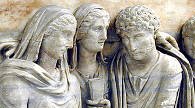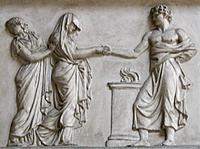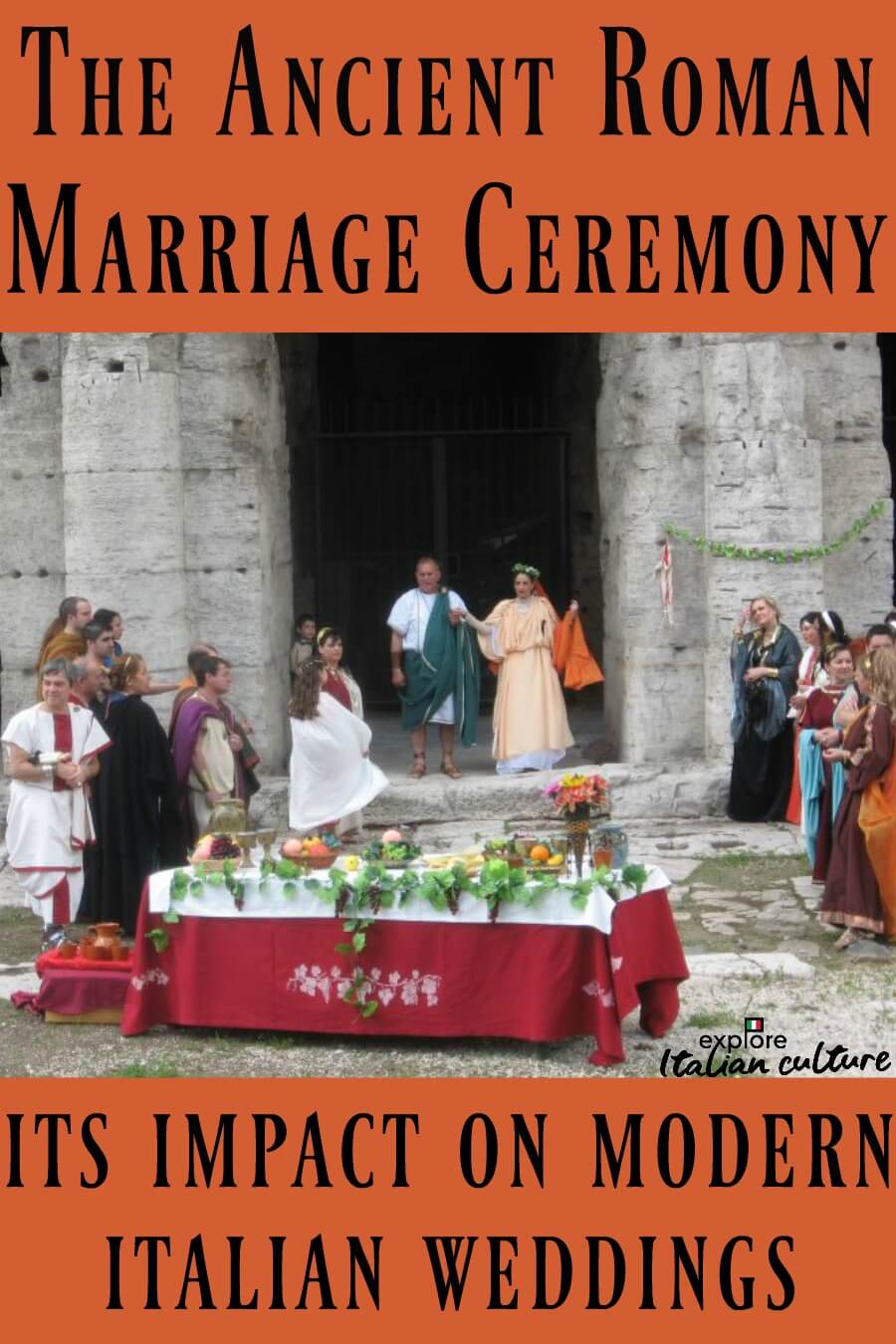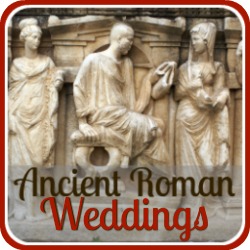The ancient Roman marriage ceremony and its links to modern Italian weddings.
Present day matrimony owes a lot to the ancient Roman ceremony. If you're looking for some Italian culture to add to your wedding, here's where to start.
Civil weddings in modern-day Italy are fairly proscribed. There's not a lot of scope for the bride and groom to influence the ceremony.
And the reason for that, as with many Italian wedding traditions, is based in ancient Roman culture.
The ancient Roman marriage ceremony: preparations.
The peoples of the Roman Empire were deeply rooted in tradition and customs, and the wedding ceremony followed a very strict format.
To families in ancient Rome, following that structure would have been as important as the legalities of wedding services in Italy are today.
Before the marriage itself, the formalities of engagement ring tradition would have been observed, the niceties of engagement culture strictly enforced, the right to marry and a dowry confirmed and a contract signed - the ancient form of a pre-nuptial agreement.

On the morning of the wedding, while the bride's preparations were taking place in her parent's home, her father, two close friends and the priest who would celebrate the marriage would watch for omens. Before sunrise an animal would be sacrificed and its entrails 'read', and at sunrise the skies would be watched for storms.
Only if the omens were good would the wedding go ahead. and it would always be in the early morning.
The ancient Roman marriage ceremony: where did it take place?
The first part of the ceremony was always at the home of the bride's parents. The venue would be decorated with flowers picked from their own garden and, for well-off families, with tapestries made specially for the occasion.
Roman houses had a large 'atrium' or entrance hall, and it was there the ceremony took place.
The ancient Roman marriage ceremony: who was there?

Although the parents of the bride and groom were present, bridesmaid duties in ancient wedding traditions meant that ten witnesses and the matron of honour played the major roles.
Other guests would be, as they are today, friends and family. To be asked to attend a wedding was considered a major honour, so invitations were always accepted and wedding parties tended to be quite large affairs.
Strangely, one person who didn't necessarily need to turn up was the bridegroom. Ancient wedding traditions meant that if he didn't feel like attending, a letter confirming his intention to marry was enough!
The ancient Roman marriage ceremony: what happened?
Once the bride and groom had joined guests in the 'atrium', the celebrant would start the wedding by ordering evil spirits away. The spirits of the house would be asked for their blessing and the spirit of fire asked to bless the couple.
Finally Janus, the spirit of new beginnings, would be invoked to bless the couple's transition from single people to a married couple.
The ancient Roman marriage ceremony: the joining of hands.
The main part of the ceremony would come next.
While modern Italian wedding traditions normally have the father of the bride 'giving' the hand of his daughter to the groom, bridesmaid duties in ancient Roman culture gave this privilege to the matron of honour or 'pronuba'.
This was the focus of the whole ceremony. Her joining of the couple's right hands signified the point at which the couple were considered to be legally married.

The only words officially required of the bride would then be said: "Ubi tu Gaius, ibi ego Gaia", loosely translated as "wherever you go, there also go I, your wife".
The marriage, like the engagement before it, would then be formally and legally sealed with a kiss. This is likely to be the origin of the modern ceremony in Italian (and other) wedding cultures, which always invites the groom to kiss his new wife.
The ancient Roman marriage ceremony: the contract and the cake.
To end the ceremony the couple would together offer a sacrifice - usually a pig - and ten witnesses would sign the wedding contract.

The final formal act of the ceremony was the couple 'breaking bread' together.
Although this is sometimes described as 'cake', it was actually unleavened bread which the couple would feed to each other to symbolise their commitment to the relationship.
So, here is the origin of the modern custom of the bride and groom feeding each other wedding cake and champagne.
The ancient Roman marriage ceremony: what about the rings?
Ancient Roman jewelry traditions meant that men never wore wedding rings, and no rings were exchanged at the wedding ceremony.
Engagement ring tradition in ancient Rome had the groom giving his wife-to-be a ring of iron at the time of their betrothal party. This became her wedding ring and no other rings were given or received.
The ancient Roman marriage ceremony: did it finish there?
As with modern Italian wedding traditions, the formalities of the ceremony would be followed by as full or as limited an event as the families wanted and could afford. This would happen, as it does today, in the form of the wedding reception.

How to introduce ancient Roman marriage customs into your own wedding ceremony.
What should you be thinking about if you want to use some of the customs of ancient Italian wedding traditions in your own celebrations?
Here are our suggestions.
The favoured ancient Italian culture and customs related to sacrificing animals is not a great idea! But getting married in June was considered auspicious in ancient Italy. Choose June as the month you marry.
Hold the wedding ceremony in the bride's parents' house if it's big enough. If it's possible, use their entrance hallway. Staircases always make a great entrance feature for a bride.
If that's not possible, find a venue which has a 'homely' feel. A small boutique hotel with a gorgeous entrance where guests can be seated for the ceremony is ideal.
Whichever venue you use, decorate it with a very natural flower arrangement. Remember the flowers used in ancient wedding traditions would have been wild and arranged loosely rather than in a huge formal display.
Ten witnesses may be a bit much! However many you have, make sure they dress in the same way. See this page about bridesmaid duties for more information.
You may want to stand by the modern tradition of the father 'giving away' his daughter, and this is still very much the tradition in modern Italy. The matron of honour should play a major role though. At the very least, along with the mother of the bride, the matron of honour should help the bride to dress on her wedding morning.
If for some reason the bride's father is unable to give her away on her wedding day, think about a woman taking this great honour. The bride's mother is the obvious choice.
Make sure the bride and groom feed each other cake at their reception, and entwine hands to drink their champagne.
If you're a guest, consider giving the couple a proper horseshoe as a gift. Iron engagement rings were lucky in ancient Roman marriage traditions and Italian men often carry a small piece of iron as a lucky token. Giving an iron horseshoe is a nod to this tradition - and more unusual, not to mention longer-lasting, than a cardboard one.











